
- Subject:
- Social Science
- Material Type:
- Module
- Date Added:
- 07/10/2017

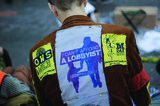




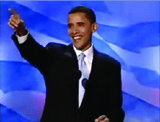

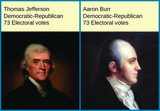

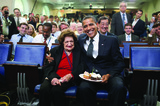



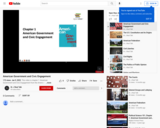
The videos covered in this playlist are from the American Government and Civic Engagement from the American Government 3rd edition textbook published by Open Stax https://openstax.org/details/books/american-government-3e
The videos cover chapters 1 - 14.

Short Description:
In covering American government and politics, our text introduces the intricacies of the Constitution, the complexities of federalism, the meanings of civil liberties, and the conflicts over civil rights, and shows how policies are made and affect people’s lives. For questions about this textbook please contact textbookuse@umn.edu
Long Description:
American Government and Politics in the Information Age is adapted from a work produced by a publisher who has requested that they and the original author not receive attribution. This adapted edition is produced by the University of Minnesota Libraries Publishing through the eLearning Support Initiative. For questions about this textbook please contact textbookuse@umn.edu
Word Count: 194406
(Note: This resource's metadata has been created automatically by reformatting and/or combining the information that the author initially provided as part of a bulk import process.)

Originally published as American Government and Politics in the Information Age in 2011 as CC BY-NC-SA.
Updated by James J. Tuite in 2020. This is a textbook for the first part of an introductory course on the American political process. Teaches the structure, operation, and process of national, state, and local governments.
Video lectures are available at: https://www.youtube.com/playlist?list=PLCInj8bmD5BUa9UnNrtAblznm6skFNZJh
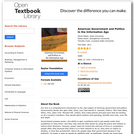
This text is a comprehensive introduction to the vital subject of American government and politics. Governments decide who gets what, when, how (See Harold D. Lasswell, Politics: Who Gets What, When, How, [New York: McGraw-Hill, 1936]); they make policies and pass laws that are binding on all a society’s members; they decide about taxation and spending, benefits and costs, even life and death.Governments possess power—the ability to gain compliance and to get people under their jurisdiction to obey them—and they may exercise their power by using the police and military to enforce their decisions. However, power need not involve the exercise of force or compulsion; people often obey because they think it is in their interest to do so, they have no reason to disobey, or they fear punishment. Above all, people obey their government because it has authority; its power is seen by people as rightfully held, as legitimate. People can grant their government legitimacy because they have been socialized to do so; because there are processes, such as elections, that enable them to choose and change their rulers; and because they believe that their governing institutions operate justly.Politics is the process by which leaders are selected and policy decisions are made and executed. It involves people and groups, both inside and outside of government, engaged in deliberation and debate, disagreement and conflict, cooperation and consensus, and power struggles.In covering American government and politics, this text introduces the intricacies of the Constitution, the complexities of federalism, the meanings of civil liberties, and the conflicts over civil rights;explains how people are socialized to politics, acquire and express opinions, and participate in political life; describes interest groups, political parties, and elections—the intermediaries that link people to government and politics; details the branches of government and how they operate; and shows how policies are made and affect people’s lives.

Short Description:
In covering American government and politics, our text introduces the intricacies of the Constitution, the complexities of federalism, the meanings of civil liberties, and the conflicts over civil rights, and shows how policies are made and affect people’s lives. For questions about this textbook please contact textbookuse@umn.edu
Long Description:
American Government and Politics in the Information Age is adapted from a work produced by a publisher who has requested that they and the original author not receive attribution. This adapted edition is produced by the University of Minnesota Libraries Publishing through the eLearning Support Initiative. For questions about this textbook please contact textbookuse@umn.edu
Word Count: 231906
ISBN: 978-1-946135-04-9
(Note: This resource's metadata has been created automatically as part of a bulk import process by reformatting and/or combining the information that the author initially provided. As a result, there may be errors in formatting.)
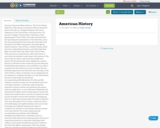
Concept: Cherokee Nation History- The Trail of Tears
Objectives: The juniors in American History should be able to describe, in a timeline diagram, the events leading up to the Trail of Tears, and must score a 75 percent or higher.
Introduction: I will show a video displaying the Trail of Tears. The video will introduce the upcoming new information of the Cherokee, since the class learned about the actions the Cherokee took during the Civil War.
Vocabulary: Cherokee Nation, Andrew Jackson, Trail of Tears, civilized tribe(s), death marches, Indian Removal policy, and Chief John Ross
Body of Lesson: Show the video of the Trail of Tears. Then move onto a small lecture. After the lecture is over allow the students to pair share with a partner. This allows time for them to get notes they might have missed. The bring the class back together for a group discuss to talk about if the actions by the Cherokee and United States government can be justified or not. Next I would go onto the interest to access a website that has firsthand experience the Cherokee went through on the Trail of Tears. Lastly, I would give out an assignment for the students to complete that goes over the information learned to take home for homework.
Accommodations/Modifications: For ELL and ESL students I would use some sort of translation site such as Google Translate. I would also walk around the classroom trying to answer any questions the special students might have, or not understand. Emphasize the information students need to understand to ensure the homework would be done correctly. If students are deaf go slow enough to ensure the translator is keeping up, and try to sign some words myself. If student is blind try to be very descriptive. Try to create a classroom that is still challenging to the gifted students, this can be done by having more difficult questions for them to complete, but still able to work easily with one another so no one is bored. Try to have classroom that accommodate any students need.
Multiple Intelligence(s) Addressed: I would like to have a classroom with almost every learning style used, have it range from hands on to visual aids. Anything could really be used, and be beneficial as long as it relates to the Cherokee Nation.
Assessment: Have the student write out a timeline of events leading up to the Trail of Tears, which they will have to score a 75 percent or higher on.
Materials: Textbook (depending what book the school has), use The West: An Illustrated History; By: Geoffrey C. Ward; 9780316735896; Little, Brown and Company, http://www.learnnc.org/lp/editions/nchist-newnation/4532 for personal experience from soldiers point of view, http://www.bringinghistoryhome.org/assets/bringinghistoryhome/(3)%20indianremoval.pdf has experiences and activity plus talks about the five civilized tribes.
Standards: SS 12.4.2 (US) Students will analyze and evaluate the impact of people, events, ideas, and symbols upon US history using multiple types of sources. SS 12.4.5 (US) Students will develop historical research skills.